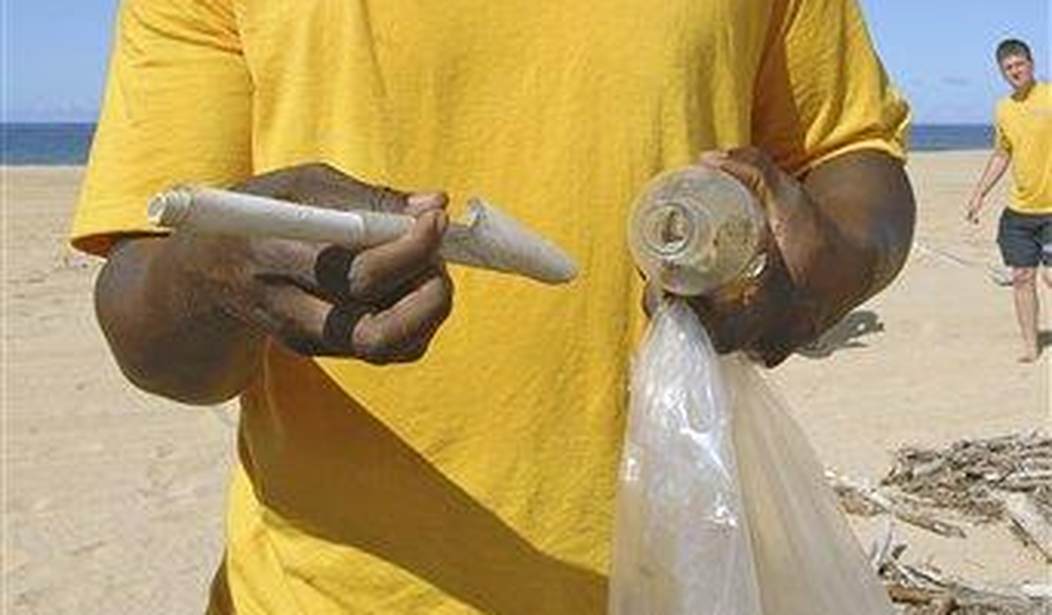When I was a little boy, my parents and I took the ocean ferry out to Nantucket one blustery summer day. My father had me make a handwritten note with my address. We put it in an empty wine bottle, corked it good and tight, and walked back to the stern where the propellers were churning the saltwater with thunder.
I looked out on the vast water then, and for the very first time in my short life, I could see no land. In any direction. Nothing. Until that afternoon, I thought Lake Erie was large.
Dad said to lob the bottle off to the side. So, I cocked my arm for the best Little League throw and sent it high, end over end into the ocean. It splashed safely and bounced up. Together, Dad and I watched the tiny vessel bob out of sight all alone among the whitecaps. Over the years we did that several times. He called it “doing a bottle.”
I have no recollection that we ever heard anything back. Turns out, that’s not the point.
From then on, throughout my childhood (and sometimes in my adult imagination) after reading to me each night, Dad would stand up from my bed beneath the world map where all my journeys so far were marked in crayon. He’d walk toward the door. As he reached for the light switch, my father would turn to me and say, “I wonder where our bottle is tonight.”
As darkness fell in my room, I’d glance up at the map with the many open spaces where I had yet to go. And I would gently fall asleep, imagining all the exotic places our bottle might be drifting at that moment. Maybe even another country. On some foreign beach, waiting as long as it took to be found by someone I did not know.
Apparently, I’m not alone in that reverie. Every now and then, I’ll read of another bottle being found after many years, often part of ocean current studies. One was found in Hawaii this summer 37 years after Japanese schoolchildren threw it into the Pacific.
Others float about for a century or more, traveling vast distances — or not so far. One in the North Sea drifted an average of only nine miles a year for more than 100 years. The rediscovered ones are surely a minority of those launched.
Not by accident, in my opinion, I ended up wandering all over that childhood world map in a long journalism career at home and abroad.
Often with my own children, I’ve set dozens of bottles free over the years, now mostly plastic to avoid breakage and ease travel by wind. About one in five come back. I put the date on each note, but not the launch location, counting on the power of curiosity to motivate the finder. I answer them all.
The shortest bottle voyage was nine miles down a Montana river, but it survived a large waterfall. One hurled off a Japanese beach drifted up the coast two months ’til a fisherman found it. A little boy in British Columbia found one a month after I lobbed it off a ferry out of Vancouver. A sailboat skipper off Rhode Island read one bottle message through the glass, wrote me, then relaunched the bottle.
My first big find came in the early 1960s. A Danish fisherman out of Iceland found it in one of his nets nine months after I threw it off a passenger ship in mid-Atlantic. What are the odds of that in such an immense place?
In the early 1980s, I assigned myself to recount the story of a survivor of the doomed RMS Titanic that struck an iceberg off Newfoundland on its maiden voyage from Southampton to New York. On the night of April 15, 1912, the brand-new ship did sink, killing 1,517 in the frigid North Atlantic waters. Only 706 survived. Among them was Frank Goldsmith.
His father was a British factory worker, a lathe operator who’d saved $30 to purchase passage for his family to the United States where he heard jobs were plentiful and a bright future awaited his only son.
Adequate lifeboats were unnecessary because the Titanic was unsinkable. And in those days, it was women and children first. Goldsmith remembered his father hugging him on the ship’s slanted deck in the post-midnight chill. His father said, “So long, Frankie. See you later.”
Shortly after that, huddling in a lifeboat, for reasons the nine-year-old did not understand at the time, his mother covered the boy’s eyes as the great ship began its nearly three-mile journey to the bottom.
The boy had a good life and wife and three sons over the years. Every April, however, he became morose, said he often expected his father to walk through the door. Goldsmith told his wife when he died, he wanted to rejoin his father at the Titanic site.
And so it came to pass that Frank Goldsmith died of another stroke. His wife contacted the Coast Guard, which flies over the Titanic site every April 12 to drop a memorial wreath some 1,200 miles northeast of New York and almost 400 miles off Newfoundland. Two dozen people who never knew the man, just his story, worked to arrange for the son to be back with his father.
On the anniversary, Petty Officer John Flynn pulled the lever that lowered the loading ramp at the back of the Coast Guard reconnaissance plane in a gloomy gray sky. Frigid air blasted in, sucking out anything not strapped down. About 1,000 feet below through wispy clouds, silent whitecaps pocked the frigid water along with occasional icebergs.
When the navigator signaled the plane was over the wreck, Flynn flung the large wreath out. Then, he leaned over the abyss with a small cardboard box in his hand. He tilted it upside-down and Frankie Goldsmith’s granular ashes flew out to scatter and drift down to the waiting water.
There was a solemn pause. And then I lobbed out the back a Diet Pepsi bottle containing two of my business cards. That was the end.
Except it wasn’t.
Eighteen months later, I received a letter with child’s handwriting. It seems a schoolgirl had been picnicking with her family on an island off Bordeaux, France. She spotted a glass bottle sticking from the sand waiting to be found as long as it took. Her father said, Leave it alone. But the little girl didn’t.
The bottle had no label but was covered with barnacles. She shook it. Something was inside.
What was inside were two of my business cards. The little girl and I became pen pals. French newspapers wrote about the unusual pair who never met but connected across the Atlantic and years through a message in a drifting bottle.
I still launch an occasional message into the ocean. For all I know, those messages and that first corked wine bottle may still be bobbing among the whitecaps out there somewhere. I’ve moved so much over the years, though, I don’t expect more replies.
But turns out, that’s not the point. Some nights I still imagine where that first bottle might be. And all the others I’ve set adrift since. And whenever I do, like Frankie Goldsmith and his Dad, my father and I are back together again, too.













Join the conversation as a VIP Member